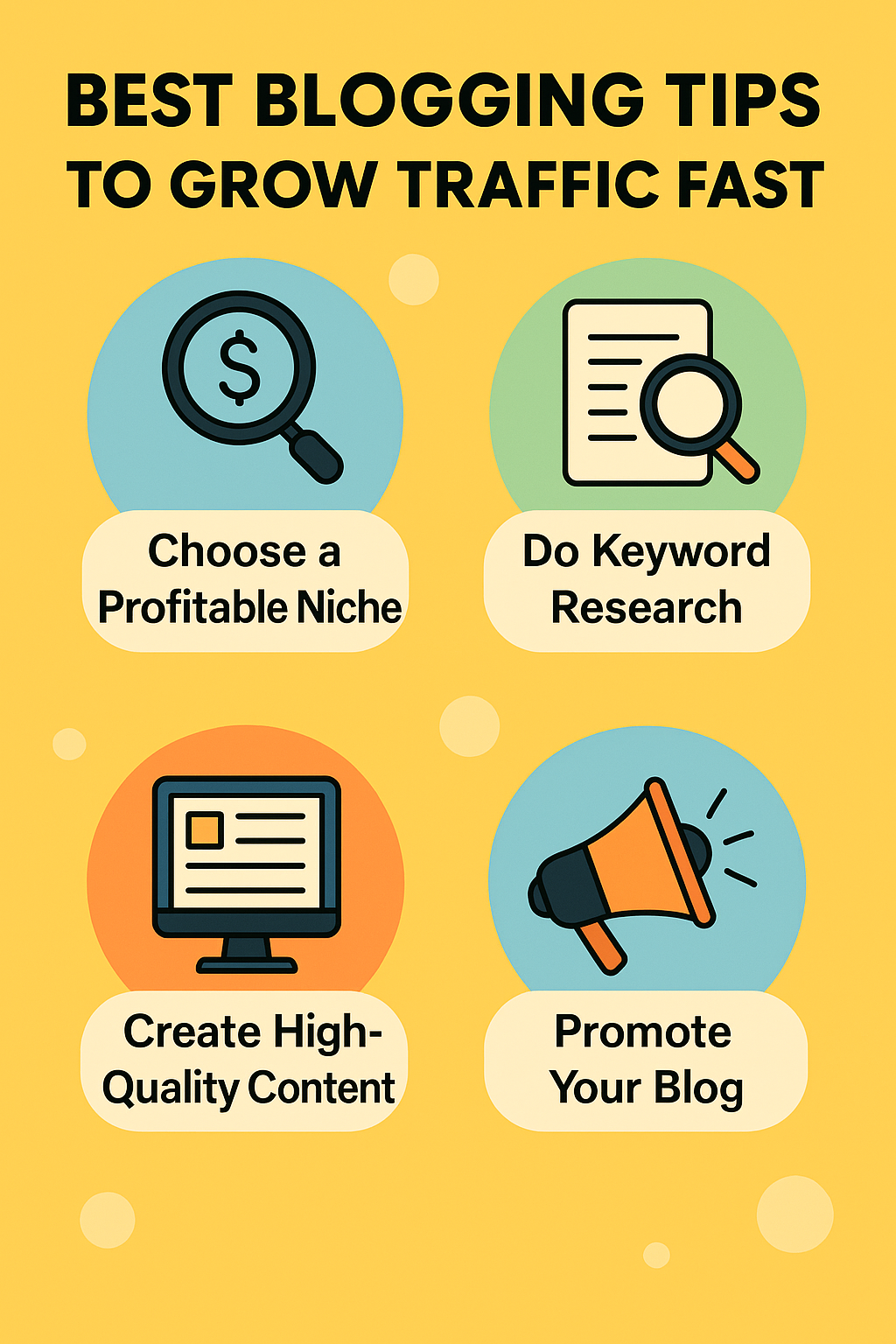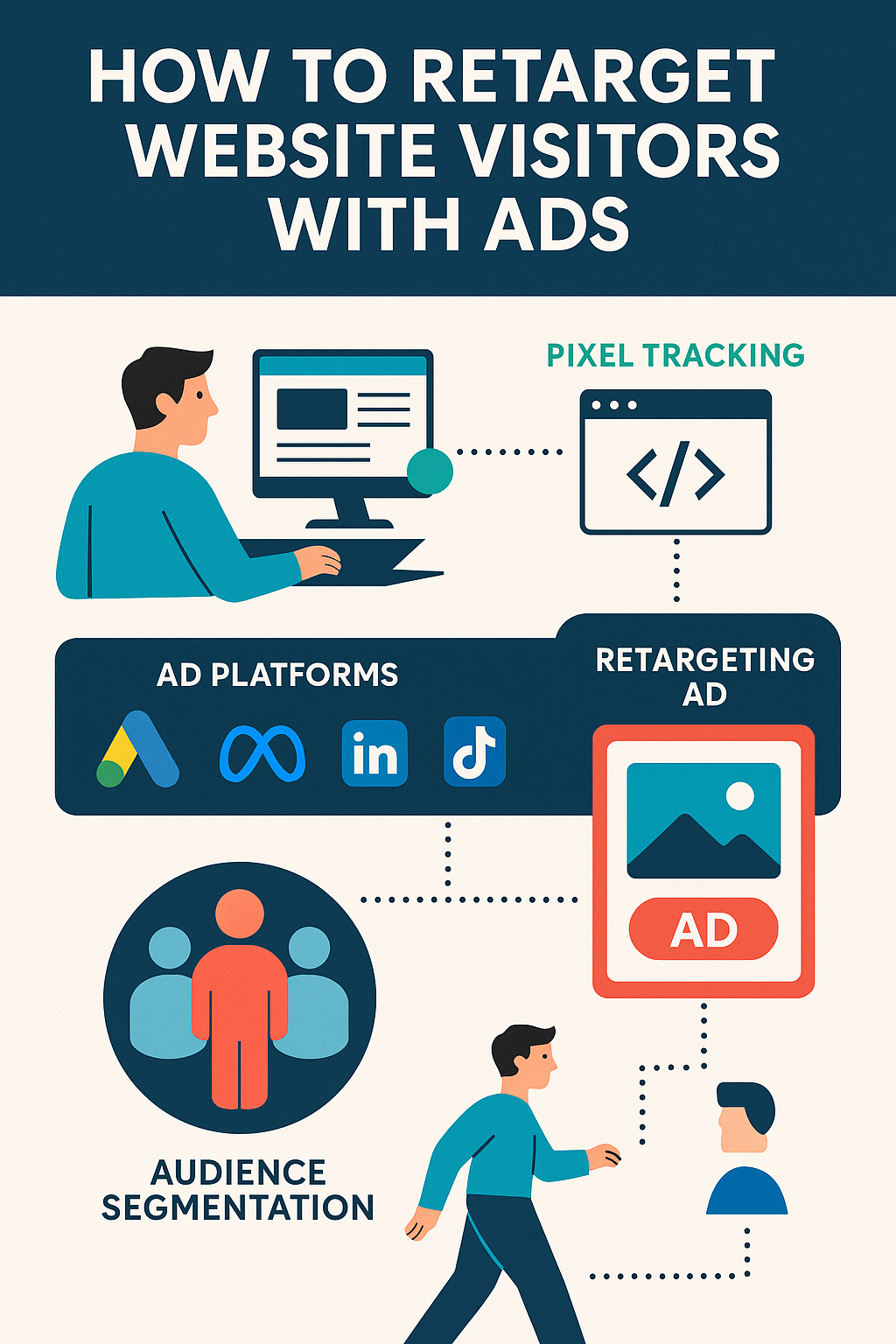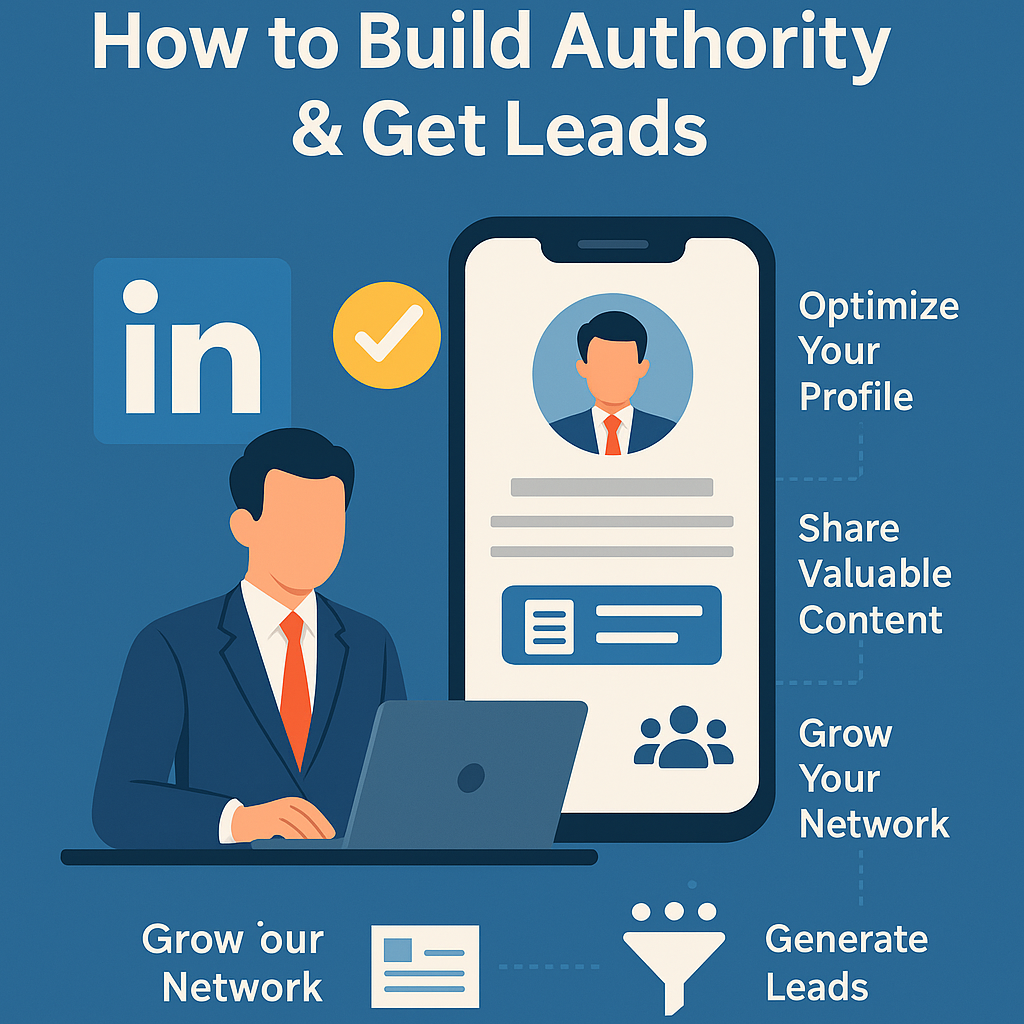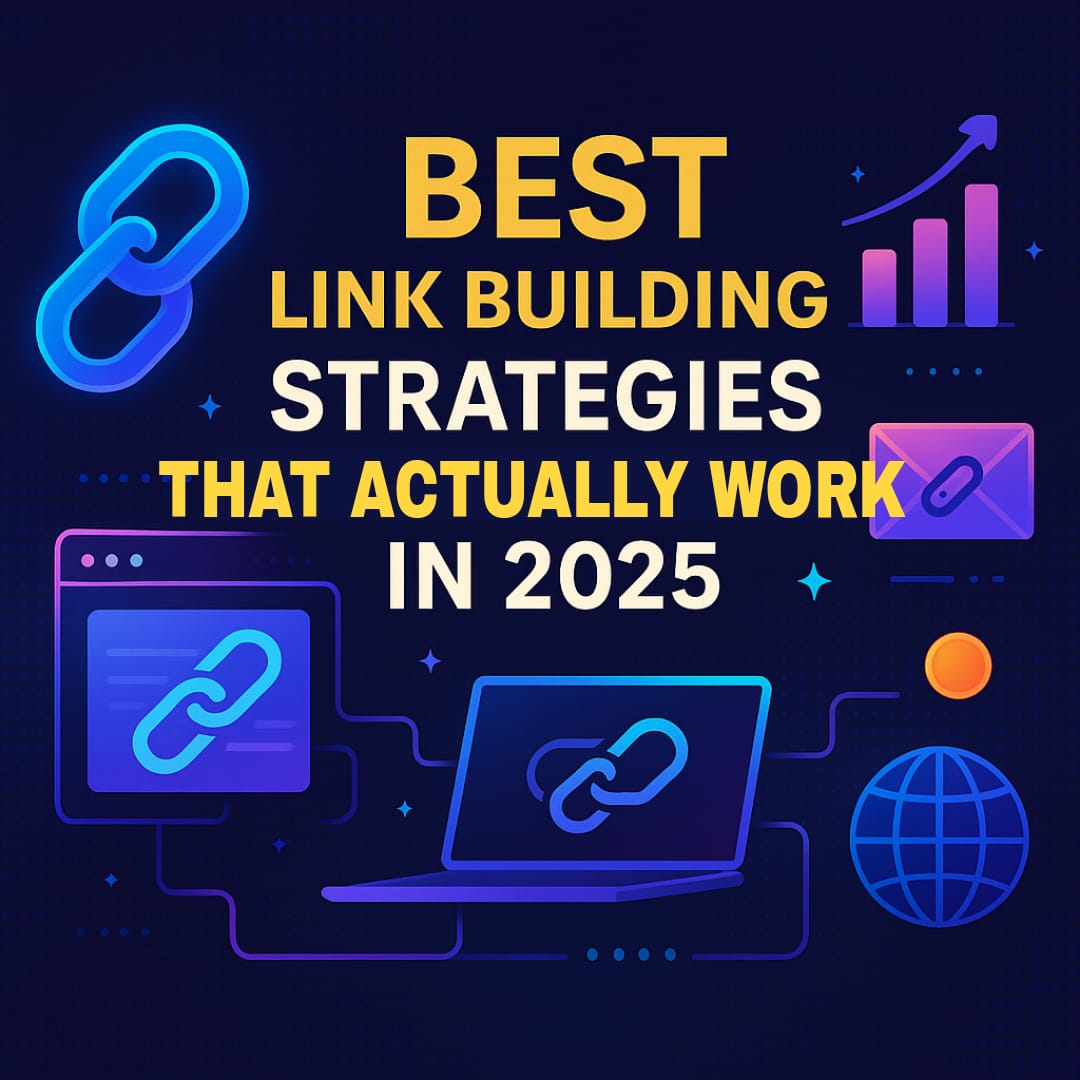Best Blogging Tips to Grow Traffic Fast (2025 Guide)
Table of Contents
Blogging has not met its demise — and I sincerely doubt it ever will. Certainly, at a time when TikTok scroll fatigue and algorithm chaos are ruling the world, blogs still exist as the most stable and search-engine-friendly (we use this term lightly) means of building community, growing authority, and establishing a steady income. But let’s face it: slapping “publish” on random posts doesn’t make Google fall in love with you, nor will that produce floods of traffic to your site.
In your quest to create a blog that is populated with a lively readership, grows fast, garners eyeballs, and makes money (in this case, AdSense checks — yes, I said it), you need to incorporate a game plan surrounding smart SEO, good content, and insane consistency.
According to The New York Times Licensing Any marketer worth their salt knows that creating web content is critical for driving site traffic. Without quality content, there would be nothing on your site for your consumers to read. However, simply providing content isn’t enough. To see a boost in website traffic, you need to be strategic.
In this article, we will explore the best blogging tips, to grow more traffic quickly, optimize your website for search engines and to create a platform that actually ranks.
Why Growing Blog Traffic Fast Matters
Traffic is the lifeblood of blogging, in other words, [x] without traffic your words are simply messages in a bottle tossed into the ocean of the internet. But with traffic, you have:
- Ad revenue: Programs like Google AdSense and Mediavine are both ad slots on your site that make their money on impressions.
- Email list building: Every new one-time reader can be a potential loyal reader if they sign-up for your email list.
- Authority: The more people that discover you, the more Google tends to trust you.
- Monetization opportunities: There are more than just ads; think affiliate links, that can be sponsored, and digital products.
The faster you grow traffic, the faster you can start testing monetization strategies, narrowing your niche and credibility in search results.
1.Nail Down Your Blogging Niche (Don’t Skip This)
Most importantly, before you get caught up with SEO hacks, you need some clarity. Traffic will accelerate the fastest when Google knows exactly what your blog is about. A precision niche builds topical authority.
Important tips when selecting a niche that will win:
- Select areas where topic area is narrow but interesting enough, so you can produce consistent content, without getting burnt out.
- Assess that there is demand by looking for search volume, using Google Keyword Planner, Ahrefs or Ubersuggest, your go to SEO tool.
- Avoid niches that are dead ends – low interest or hard to build a monetized blog.
- Stay in in evergreen topics (such as personal finance, fitness, productivity, travel hacks) which continue to attract searchers.
Pro tip: Don’t go too broad (e.g. “lifestyle”), but don’t go too narrow either – (e.g. “blue ceramic teacup reviews”).
2.Keyword Research: The Map to Blog Traffic
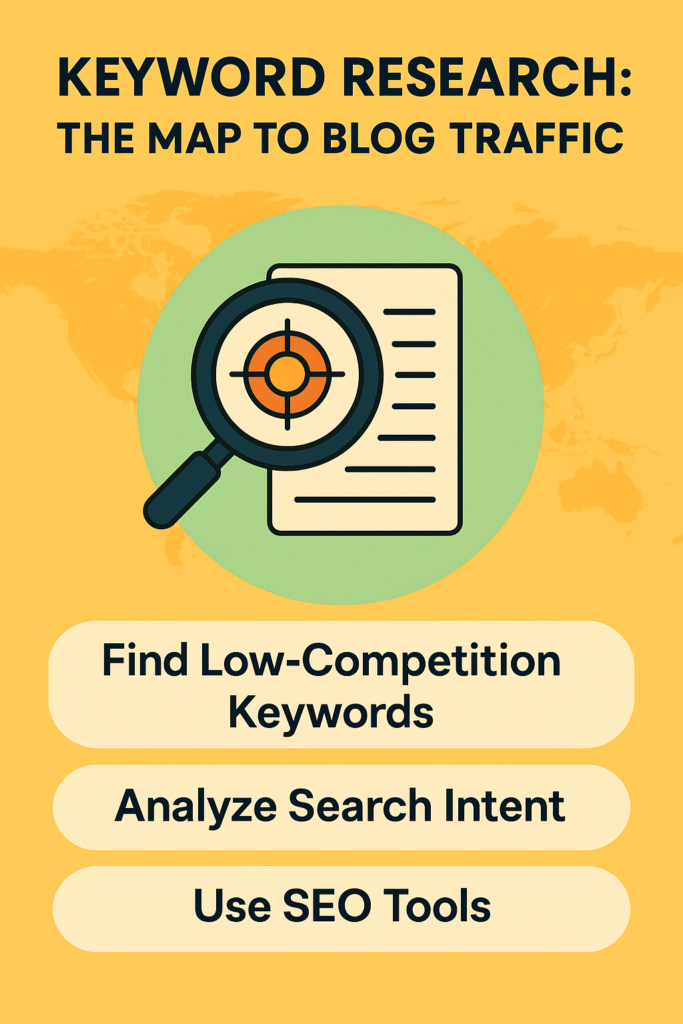
Keyword research is the lifeblood of SEO blogging. If you don’t do it, there’s a good chance your content will languish in obscurity.
Here’s how to think about keyword research to get some virulent traffic growth:
- Target long, long-tail keywords: Instead of “blogging tips” try “best blogging tips to grow traffic fast”. Much easier to rank and get a reader in the motivated mindset.
- Look for competition: Use tools like Ahrefs or SEMrush to know what’s ranking. If the top results are mostly dominated by big sites, switch to a keyword that is less competitive.
- Look at the intent: Is the keyword a learning, buying or problem-solving keyword? Be sure your content aligns with that intent.
- Look for those low competition gems: Keywords that have moderate volume but weak competitors can really give your early traffic a kick.
Once you have your keywords, then you can create your content calendar. This is important to maintain consistency, ward off writer’s block, and show Google that you have a live site and are still showin’ up!
3. Content That Captures and Converts
Blogging involves more than just using keywords. You must produce blogs that people really read, want to share, and stay on. Google pays attention to things like bounce rate, dwell time, and engagement.
Here’s how to write a blog that’s optimized for traffic:
- Strong introductions: In the first few lines, tie in empathy for your readers’ problem so you can hook them.
- Break up your text: Using sub-headings, bullet points, and images. Nothing intimidates your readers more than when they see a long wall of text.
- Focus on detail: 2,000+ words tend to perform better but don’t create fluff! Provide actionable steps.
- Refresh old posts: Freshness is important! You can update with the newest information and publish again.
- Use visuals: Infographics, charts, and images make posts easily digestible and can improve share-ability.
Pro tip: Naturally, use your target keyword in the title, first paragraph, meta description, URL, and sub-headings! Don’t stuff keywords — Google is smarter than that!
4. SEO Optimization Beyond Keywords
SEO involves much more than just cramming keywords into everything. Google also assesses the technical side and on-page factors that can enhance or eradicate your chances of ranking well in the search engines.
On-page optimization principles:
- Title tags and meta descriptions: Create enticing snippet descriptions. They need to be keyword-heavy yet enticing so you can get clicks.
- Internal linking: Provide readers (and crawlers) with links to related content.
- Mobile optimization: More than half of your readers are coming from phones. Your blog must load fast and look tidy.
- Site speed: Compress images, and add caching, and choose high-quality hosting.
- Schema markup: Help Google understand your content, so it can display rich snippets.
Off-page optimization concepts:
- Build backlinks: Guest posts, HARO, and link building are great ways to build authority.
- Leverage social proof: Shares, mentions, and other authority signals tell Google you exist and are respected.
Traffic growth happens rapidly when you have great content and clean SEO hygiene.
5. Promotion: Don’t Just Publish, Distribute
“Build it and they will come” is a blogging myth. Once you’ve pressed publish, the real work really begins — the promotion.
High-impact methods for traffic:
- Social media marketing : Pick snippets from your blog post and repurpose them into carousels, tweets, or LinkedIn posts.
- Pinterest SEO :it’s still one of the litte gems for traffic, especially if you’re in lifestyle, recipes, or finance niche.
- Email list building : give something away for free (PDF freebie guide) to convert visitors into subscribers.
- Networking with bloggers: comment on other’s blog posts, do collabs, and exchange backlinks.
- Quora & Reddit : add value to comments and link back (not spammy).
When you seed your content into more places, the faster the snowball effect happens for traffic.
6. Monetization Readiness: AdSense and Beyond
You can monetize your blog relatively quickly through AdSense if you follow their guidelines. Google will approve blogs that look professional, add real value, and follow policy.
Checklist for AdSense approval:
- Custom domain name (you want to avoid free (subdomains: blogspot or WordPress)).
- Professional theme and design.
- About, Contact, and Privacy Policy pages.
- A minimum of 15–20 quality blog posts.
- No plagiarism and no thin content.
Once you are approved, you will want to strategically add ads (sidebar, in-content, footer) without overwhelming your reader with thousands of banners.
Further to AdSense, you should also consider:
- Affiliate marketing (e.g. Amazon Associates, some niche affiliate programs).
- Sponsored posts.
- Selling digital products (courses, templates, eBooks).
7.Analytics: Measure What Matters
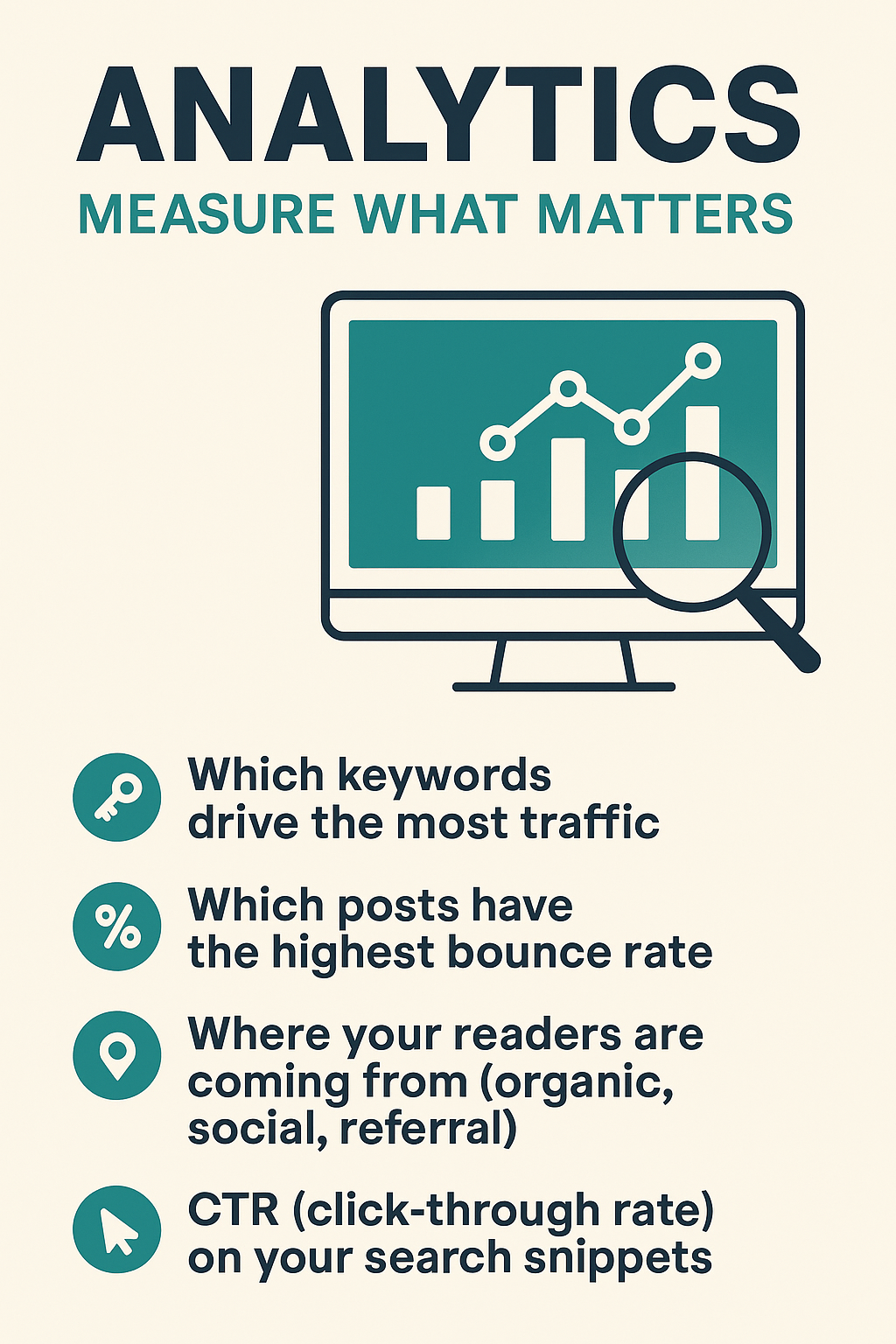
Growing your traffic with no tracking is like driving while blindfolded. Implement Google Analytics and Google Search Console to get insights on:
- What keywords are driving the most traffic.
- What posts have the highest bounce rate.
- Where your readers are coming from (organic, social, referral).
- CTR (click-through rate) on your search snippets.
Double-down on what is working, prune what isn’t, and you’ll be amazed by how fast your traffic growth will accelerate.
8. Consistency and Patience: The Real Growth Hack
Yes, there are hacks for faster growth. But sustainable traffic growth requires insane consistency. Blogs that blow up overnight typically took a few years to get there!
How to keep your consistency alive:
- Create a publishing schedule and stick to it (weekly or bi-weekly is best)
- Batch content creation
- Outsource graphic, editing, or research work wherever you can
- Keep up with Google algorithm changes
Blogging is a long game, and while it may be slow, the small wins compound into big wins!
Final Thoughts: Blogging Traffic Is a Snowball
Increasing blog traffic quickly is not about hacks — it’s about stacking smart strategies — which niche is best, understanding SEO, engaging content, constant promotion, monetization, etc.
Every blog starts at zero. The major difference between a blog that is invisible and one that grows is persistence and having a plan. If you lay a foundation today, google rewards you tomorrow.
For more such articles click here.
FAQs
How long does it take for a new blog to start getting traffic?
The average new blog typically takes 3–6 months to see consistent organic traffic, depending on the niche and how competitive it is as well as how often one posts. If you are truly committed to ensuring its success, and utilizing good SEO technique while regularly posting content, you should see some measure of growth in this timeframe.
Can I get Google AdSense approval with a brand-new blog?
Yes, but let’s be clear here, you don’t want to apply to AdSense with less than 15–20 quality blog posts, and as a newbie, you will want a custom domain and pages like About, Contact, and Privacy Policy. Google will determine whether to approve your blog based on uniqueness, user-friendliness, and compliance with their policies.
What type of content drives the most blog traffic?
Evergreen content- tutorials, how to, and problem-solving posts- will usually provide the most ongoing traffic. Trend posts may have big spikes in traffic, but they fade fast. A good combination of both is probably best.
Do I need SEO tools to grow blog traffic?
You can use free tools like Google Keyword Planner to do basic keyword research; however, SEO tools like Ahrefs, SEMrush, Ubersuggest, or other referenced sites save you time in keyword research in terms of profitability, competition awareness, and content optimization for competitors too.
How often should I publish blog posts for growth?
Although better quality outweighs quantity in some aspects of blogging growth, posting consistency is key. I suggest a sustainable publishing schedule of 1–2 quality blog posts per week.
Can social media really help grow blog traffic?
Certainly. Depending on how you correctly repurpose your blog content, Pinterest, Twitter (X), LinkedIn, and maybe even TikTok, could be significant referral traffic sources.
Is blogging still profitable in 2025?
Yes – Blogging is still profitable provided that you’re using multiple monetization models (AdSense, affiliate marketing, digital products). The key to your profitability is establishing authority, and diversifying your income.
Do I need to know coding to run a successful blog?
Not at all. You can easily start a blog with no coding if you use a platform like WordPress, Wix, or Squarespace. Having some basic knowledge of HTML and CSS can help with customization and troubleshooting, though.
How do I choose the right niche if I have multiple interests?
Start by writing out a list of the topics you are passionate about and then ways to validate those topics with keyword research and monetization opportunities. You can take a few related niches and combine them under a larger overarching theme, but don’t go so far in this area that you lose focus -Google prefers your focus.
Can I grow blog traffic without spending money on ads?
For sure. Many bloggers only build traffic on organic SEO, social sharing, and networking. Ads can help you ramp up growth more quickly; however, you don’t need to pay for ads if you continue to create optimized and consistent content.
